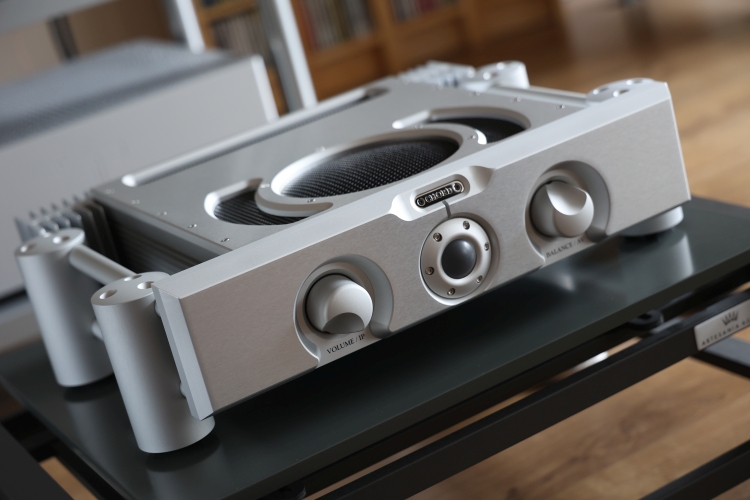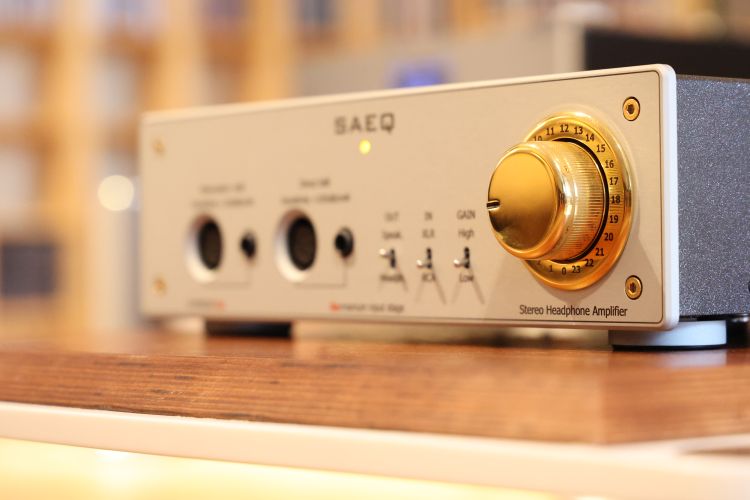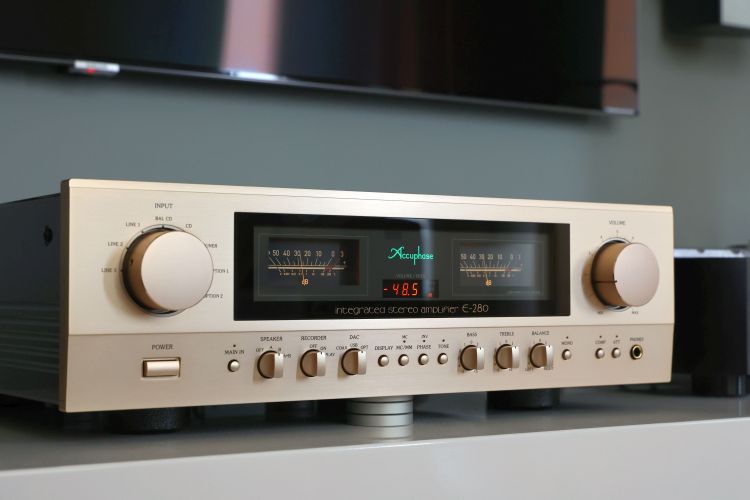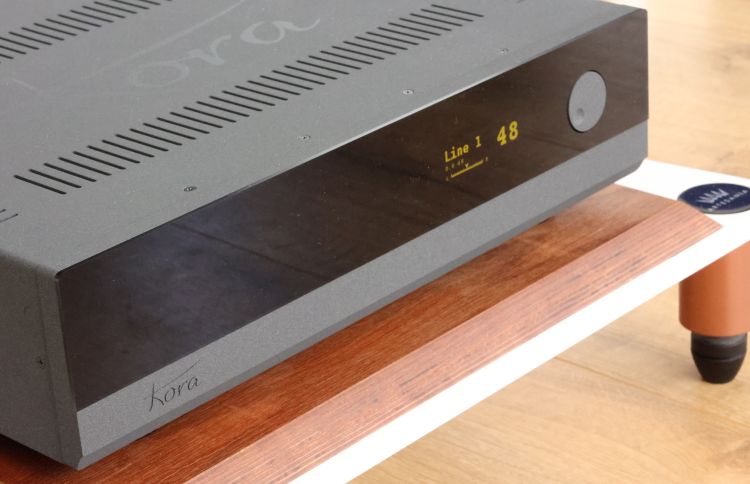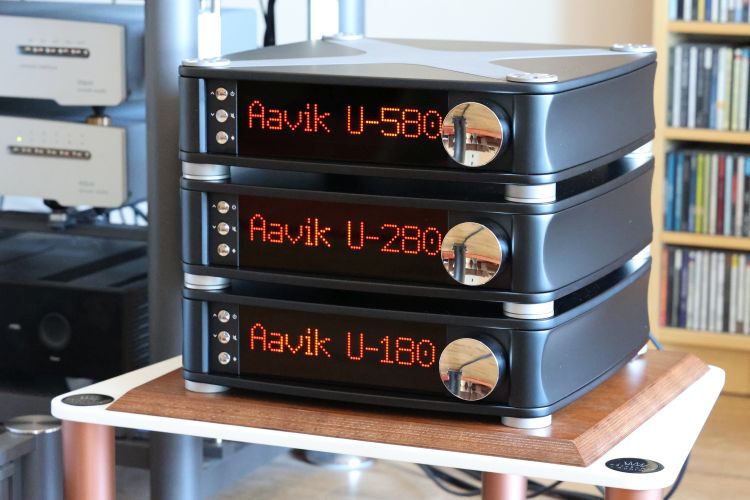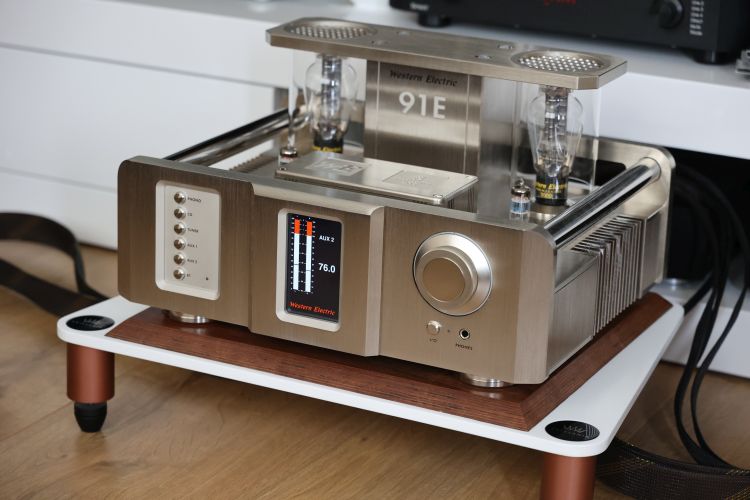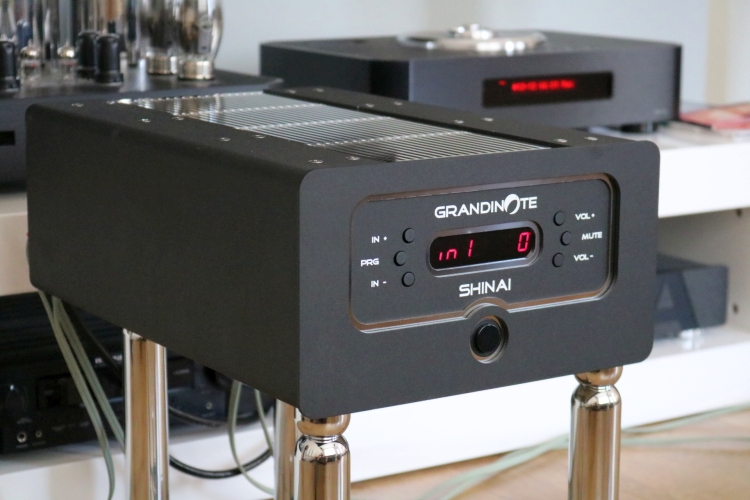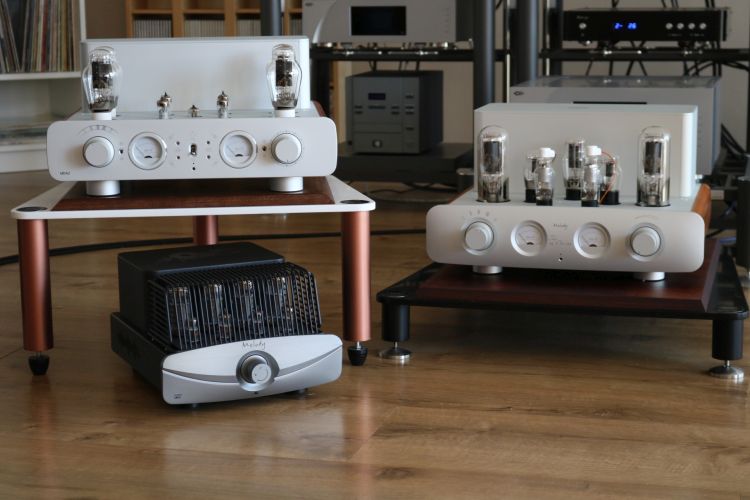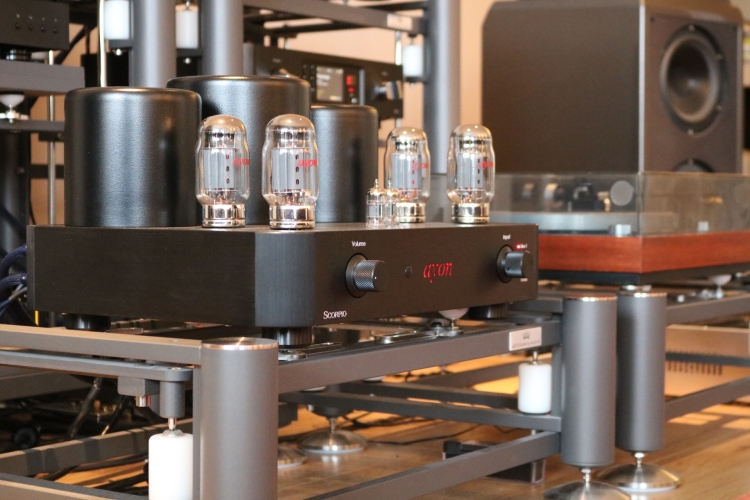
Extensive review of the Ayon Scorpio integrated amplifier and mini review of the S-3 Junior network player with DAC and preamp
Review samples supplied by Mafico
Retail Price in the Netherlands: 3895 euro
Given my fondness of Ayon products, when Hein van der Klaauw of Dutch distributor Mafico asked me if I wanted to review the Ayon Spirit III integrated amp I was quick to accept. The amp was not available on short notice, though, so Hein offered to have a listen to the Scorpio in the meantime. In his usual fashion, He did not only deliver the amp but also brought something extra, in this case in the shape of the S-3 Junior, a preamp/DAC/Streamer.
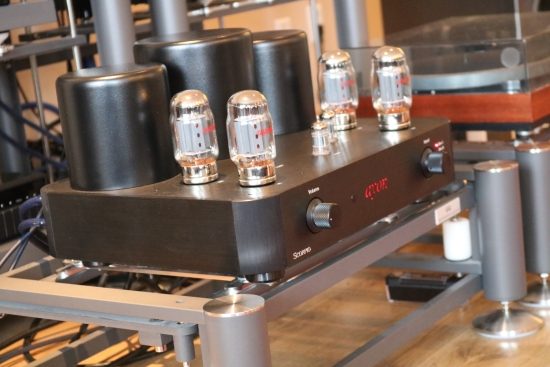
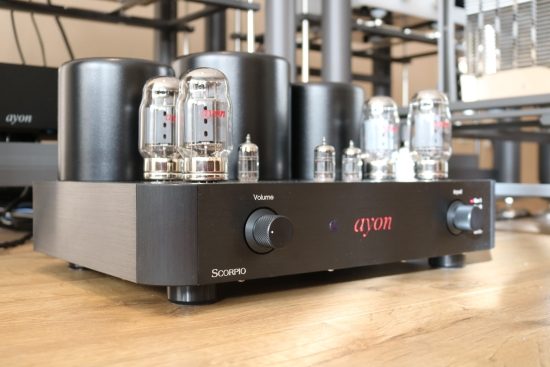
Technical
The Scorpio is Ayon’s most affordable amplifier but from the outside, there’s no evidence of any cost-cutting outside of the transformers being black rather than chrome plated. The casing is every bit as solid and classy as the higher end designs and the sturdy knobs are made from solid metal, just like those on the higher end models. Around the back, there’s one other indicator of cost-saving. Where most tube amps usually have separate output connectors for 4-ohm and 8-ohm loads, the Scorpio only has a single set. Its transformers have the required 4-ohm and 8-ohm windings for this and there are clearly labeled 4-ohm and 8-ohm leads that can be changed by the user but only one of these variants is connected to the single set of binding posts at a time. From the factory, my sample was wired for 4-ohms and because it worked brilliantly that way with all the speakers that I tried, I did not opt to change this. Other than this simplification, the amp is a full-blown, proper, Ayon amp.
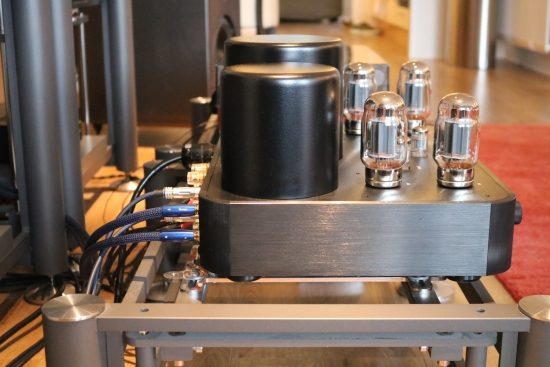
The power tubes used are Ayon-branded KT88’s in a Push-Pull configuration, made by Shuguang on the specification of Gerhard Hirt. I understand that they outperform standard Shuguang KT88’s in some parameters. The KT88’s are accompanied by three Shuguang 12AU7 driver/signal tubes and the amp delivers 45 watts in pentode mode and 30 watts in triode mode. The latter will provide a purer sound but with less power and is an option for many speakers, just not very inefficient ones. With the PrimaLuna DiaLogue Premium, I’ve often swapped back and forth between these two modes because that can be done on the fly using a remote control. In these cases, I usually preferred the Triode mode even if it was less linear and well-controlled. With the Scorpio, swapping between the two settings should be done with the amplifier switched off. Because the amp impressed me from the very start in Penthode mode and because switching off and on again takes some time, I did not try the Triode mode. Still, this should be tried, if only because the amp then switches to class A and in some aspects theoretically comes closer to their famous SET sound.
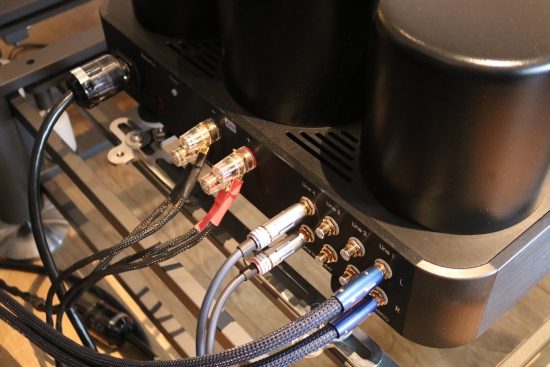
The built-in preamplifier section is not an afterthought but a properly designed tube-based preamp using individual relays for every input and a precise and smooth-operating potentiometer-based volume control which both can be controlled via infrared remote control, which, incidentally is also made entirely out of aluminum.
An important aspect of this amp is the Intelligent Auto-Fixed-Bias (AFB) circuit. Huh? Auto bias but fixed? Indeed, this is something clever that Gerhard has come up with which as far as I know is not applied by other brands. Rather than choosing between a fixed bias (that is supposed to sound better but requires frequent user input) and auto bias (that requires no user input but supposedly sounds inferior), Ayon uses a circuit that adjusts the bias automatically but only when there is no music playing. This way, the user does not have to measure or adjust anything yet there is no loss of power or dynamics. If desired, the automatic bias circuit can also be triggered by a button on the rear panel and this takes only a couple of seconds. Easy-peasy. Additionally, a tube test program can be activated by running the same setup but during start-up of the amp. This process takes more time but will run elaborate tests of all tubes and report any deviating findings on the rear panel display.
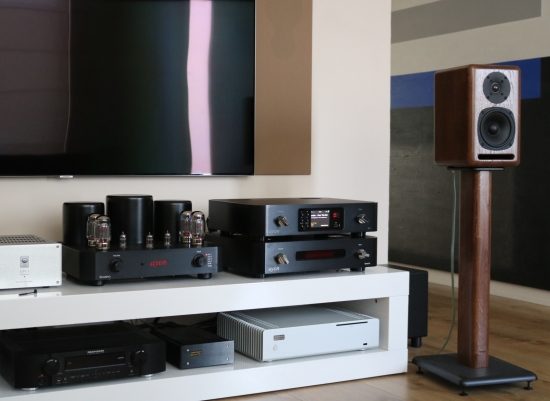
Listening part 1 – Ayon Scorpio with Xavian Perla Esclusiva
Not knowing what to expect from this very reasonably priced amp, I first connected it in my secondary setup which is typically comprised of less than breathtakingly-priced components. The Scorpio went in place of the Ayon Stealth DAC/Preamp and NuPrime ST-10 power amp. The speaker cables are the very affordable but consistently well-performing van den Hul Skyline Hybrid. The speakers in this system are Xavian Perla Esclusiva and the source is normally the AudioAanZee Reference Flow with Euphony drive in Roon mode but I figured to go all-Ayon and also connected the S-3 Junior. The latter could be seen as a Stealth with simplified power supply and output stage and no USB input but with an added network music player. The latter works utterly intuitively, no manual was required at any step in the process and thanks to a mini USB stick in the rear slot, a music library was already provided for.
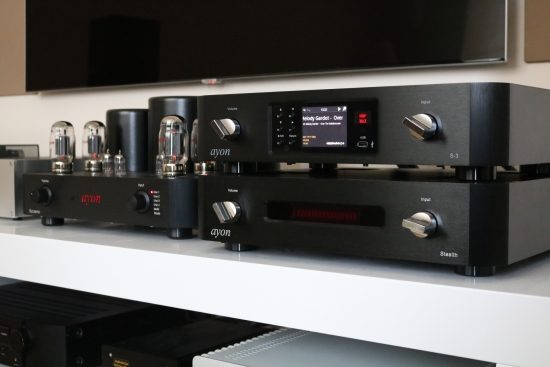
Both the Scorpio and the S3 Junior were brand spanking new and cold from their boxes but I was in a brave mood and so I switched them on immediately after connecting them up. With them not being run in I was kind of expecting a lean and diffuse sound but got nothing of the sort. The sound was upbeat, dynamic, super-focused, with a transparency and sense of hi-res not heard before in this setup. Certainly, the S-3 had something to do with this, which I will get into further down, but ultimately it is the amp that controls the speakers. What was perhaps even more surprising was that not only did the amp drive the Xavians with complete control and power to spare, the bass was almost as tight and upbeat as that of the Stealth + ST-10 combo. This is surprising because the class D NuPrime has the best bass that I’ve heard from basically all amps that do not cost an arm and a leg. Yes, the ST-10 is even more sonorous and ultimately also more powerful but the Ayon brings something that transistor amps just don’t do to the same extent: the feeling of being emotionally swept away by the music, or rather, being part of the performance. There are amps that excel on many technical aspects but fail to move me emotionally and there are those that are emotionally highly seductive but technically flawed. The Scorpio simply does both. There is a Single-Ended-Tube-like purity to the midrange that makes it impossible not to be emotionally involved but also a bass-solidity and rhythmic assurance that is rare with tubes, certainly at this price level.
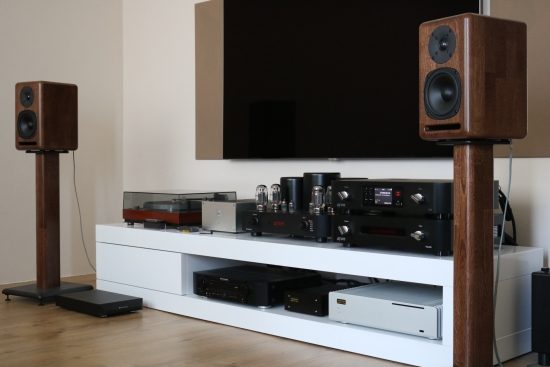
Successive listening revealed that the ever more run-in components did not change their characters much, only becoming even more enveloping in terms of soundstaging and even more seductive while the aforementioned positive aspects remained unchanged.
As the Scorpio does not have the pre-out and main in connectivity of the more upscale models, I can’t test the preamp and power amp sections independently but in all honesty, there is not even a tiny indication that the built-in preamp might fall short in any way. It does not seem to add any filtering, coloration or compression, meaning that the power amp is perfectly set up to do its job, as it so clearly does very brilliantly.
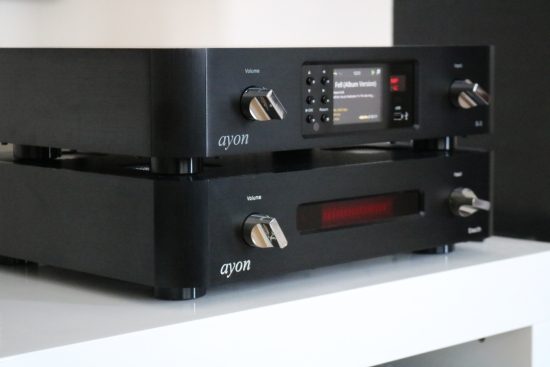
S3-Junior
The S-3 Junior offers both XLR and cinch outputs and I can’t really say that I have a preference for either, both worked great. However, it’s important to realize that there are two standards for XLR connectivity: one where pin 2 is hot, which is most widely used and one where pin 3 is hot. Make the wrong match in components and the sound is essentially in reverse phase. I’ve had this happen when combining the S3-Junior with the Kinki Studio EX M-1 amp, initially finding cinch connections to sound better, only to realize that the Kinki uses the less popular pin 3 = hot standard.
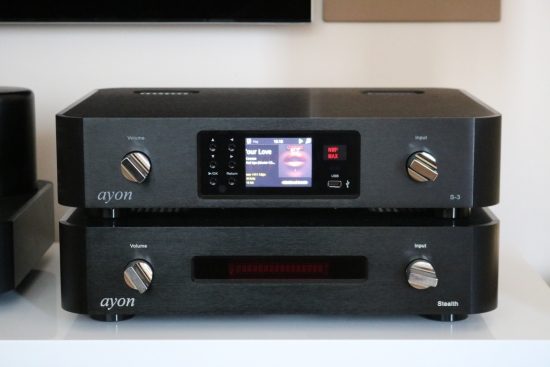
Comparing the S-3 Junior by itself to the Stealth, both connected to the NuPrime ST-10, I initially feared that the S-3 Junior might even beat the more expensive Stealth at its own game. Such was the synergy between it and the Scorpio. When examined closer, its streamer component is indeed of very high quality, possessing a very precise, transparent and articulate delivery, without tipping over into an analytical sound. Clearly, this section is embedded very carefully and integrated with the DAC section perfectly. There are no signs of jitter, no blurring or softening but also no hardness whatsoever. The S-3 Junior does not sound as impactful and sonorous as the Stealth in DAC mode (fed from the AudioAanZee Reference Flow server with Euphony Drive) but it has a level of articulation, transparency and resolution that actually surpasses it and on the whole, sounds very well-balanced.
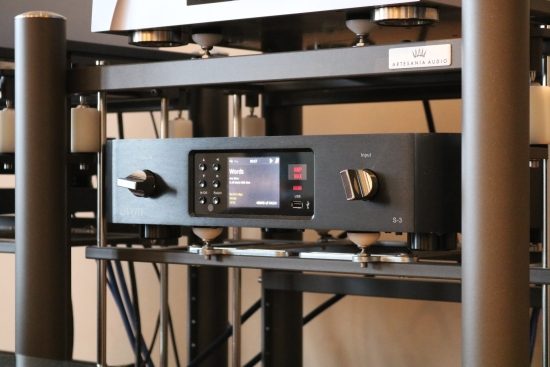
It would later turn out that the S-3 Junior’s explicit and transparent sound works very synergistically with the more sonorous Scorpio, bringing out the best of both. So far, the S-3 Junior is starting to look like something of a bargain, given that it is much more affordable than the Stealth yet contains more functionality if you don’t need the USB port.
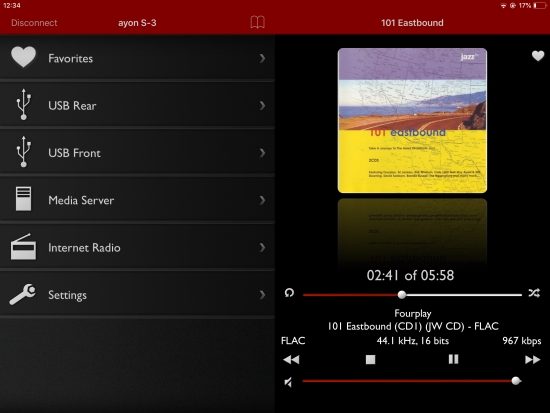
The iPad app lets you browse locally connected USB sticks or drives as well as UPnP network servers and internet radio. Both the Melco NAS as well my other NAS showed up immediately. Browsing is limited to the usual UPnP logic and a bit slow but it works clearly and solidly. It is possible to freely scrub through tracks using the progress bar. All the relevant file info is shown simultaneously in the app and on the front panel LCD screen. The S-3 is compatible with all DLNA / UPnP servers but music selection and playback can only be controlled from its own interface front panel, iPad or Android app or remote control. It does not work as a pure endpoint meaning you can’t push music to it from another device. However, it also offers Bluetooth connectivity, allowing direct playback from any Bluetooth-enabled device.
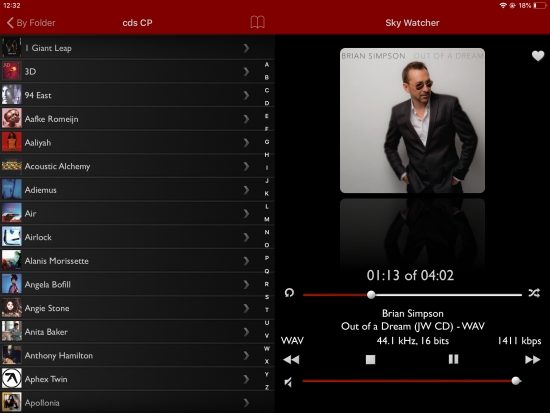
When switching to using its analog inputs rather than the streamer section, the S-3 Junior retained its remarkably open and transparent sound but wasn’t quite as sonorous or as dynamic anymore. Fair enough, purely as an analog preamp, the S-3 Junior is still good but it does not have all of the Stealth’s bass fulness, richly textured midrange or overall expressiveness. But I guess the regular non-Junior S-3 and the S-5 will take care of that.
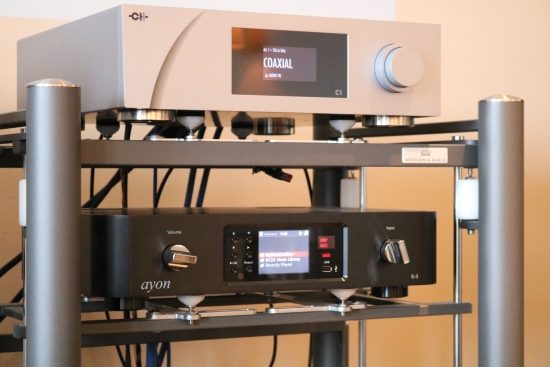
Using the S-3 Junior with its digital coaxial output and letting the CH Precision C1 do the DAC duties in the other setup, however, the Ayon confirmed my suspicions of its music player component being really good as it surprised me with its concrete, transparent and dynamic sound that, in spite of being very accurate and precise, managed to avoid any edge or electronic signature and be emotionally highly captivating. It’s the opposite of a sound that’s smoothed over or made artificially rich, rather, it’s pure, direct, timbrally convincing and impressively lifelike.
